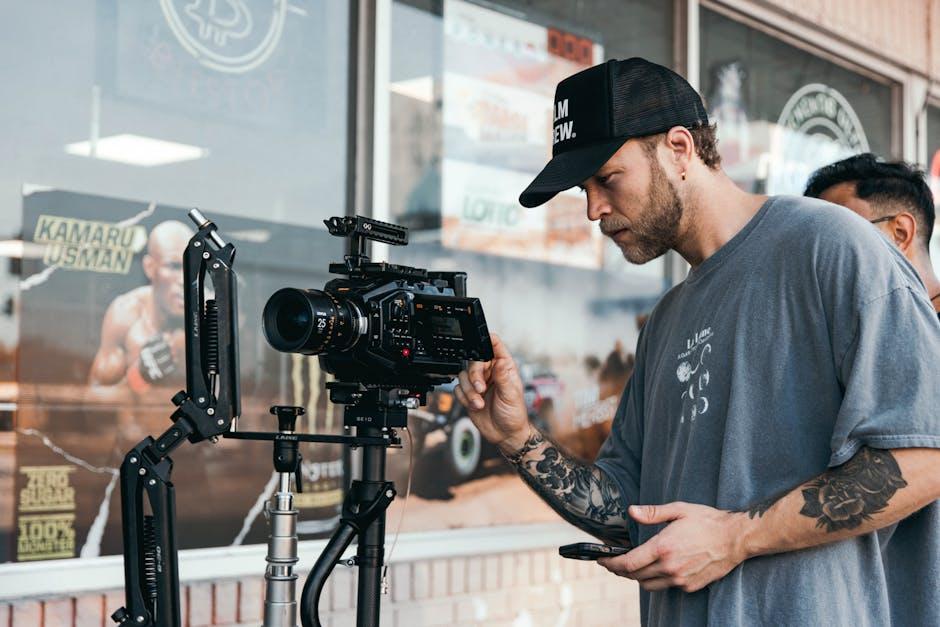In the sweeping, visceral epic that is “The Revenant,” the landscape plays as pivotal a role as any character. Alejandro González Iñárritu’s masterpiece, celebrated for its raw depiction of survival and revenge, owes much of its authenticity to the breathtaking and unforgiving terrains that served as its backdrop. From the icy rivers to the dense forests, the real filming locations of “The Revenant” are as compelling as Hugh Glass’s harrowing journey itself. This article delves into the wild beauty and stark realism of these locales, revealing how they enriched the film’s narrative and transported audiences to a world where nature reigns supreme. Join us as we explore the very ground that breathed life into this cinematic odyssey.
Exploring Untamed Wilderness: The Canadian Landscapes of The Revenant
Venturing into the vast, untouched expanses of Canada, The Revenant brought to life a world where nature reigns supreme. The film’s commitment to authenticity is evident in its choice of locations, each one a testament to the rugged beauty and raw power of the Canadian wilderness. The production team scoured the landscape to find places that would capture the essence of the early 19th century, ultimately filming in areas that offered not just stunning visuals but also an immersive experience of the untamed frontier.
Key locations include:
- Kananaskis Country, Alberta: Known for its dramatic peaks and dense forests, this area provided the perfect backdrop for Hugh Glass’s harrowing journey.
- Bow Valley, Alberta: With its sweeping vistas and icy rivers, it offered a landscape that was both beautiful and forbidding.
- Squamish Valley, British Columbia: The lush, green wilderness here brought an intense vibrancy to the film’s visual narrative.
- Dead Man’s Flats, Alberta: This location added a haunting, desolate feel, enhancing the film’s intense atmosphere.
These locations, with their untouched beauty and formidable presence, played a pivotal role in grounding the film in reality, allowing viewers to experience the visceral, unforgiving world of The Revenant as if they were stepping back in time.

Immersive Realism: How Natural Light Transformed the Film’s Aesthetic
In crafting the raw and visceral world of The Revenant, the filmmakers embraced the natural environment as a character in itself. The decision to utilize natural light became a cornerstone of the film’s aesthetic, offering a level of immersive realism that artificial lighting could never replicate. This approach demanded patience and precision, as the crew waited for the perfect moments when the sun would cast its ethereal glow or shadows would stretch hauntingly across the landscape.
- Golden Hour Magic: The film often harnessed the brief yet breathtaking golden hours at dawn and dusk, infusing scenes with a warmth that starkly contrasted the brutal cold.
- Dynamic Weather: By shooting in unpredictable weather, the film captured nature’s true unpredictability, adding layers of tension and authenticity to the narrative.
- Natural Shadows: Shadows played a pivotal role, sculpting faces and landscapes to enhance the dramatic effect without the need for artificial enhancement.
This commitment to authenticity not only heightened the visual impact but also allowed audiences to feel as though they were part of the untamed wilderness, experiencing the harsh beauty of the frontier alongside the characters.

Traversing the Elements: Key Locations and Their Impact on the Story
In the harsh, untamed wilderness of Alberta, Canada, the raw beauty of nature was captured in its purest form, setting the stage for Hugh Glass’s arduous journey in The Revenant. The icy rivers and towering pines of Kananaskis Country provided a backdrop that was both stunning and perilous, mirroring the protagonist’s struggle for survival. The decision to film in these remote, pristine locations infused the narrative with a visceral authenticity, immersing the audience in Glass’s relentless pursuit for redemption.
Key locations that played a significant role include:
- Bow Valley: Its rugged terrain and dramatic vistas underscored the film’s themes of resilience and endurance.
- Squamish Valley: With its dense forests and towering cliffs, it enhanced the film’s atmosphere of isolation and danger.
- Calgary: Serving as a logistical hub, it was essential for the film’s production, offering a stark contrast to the surrounding wilderness.
Each of these locations contributed to the film’s immersive experience, providing a tangible connection to the unforgiving landscapes that defined Glass’s epic tale.

Insider’s Guide: Visiting the Iconic Spots from The Revenant
For those inspired by the breathtaking landscapes of The Revenant, a journey through its filming locations is a must. Nestled in the rugged terrains of Canada, these spots exude a raw beauty that perfectly complemented the film’s visceral narrative. Here’s your guide to experiencing these iconic sites:
- Bow Valley, Alberta: Known for its stunning mountain views and serene rivers, Bow Valley provided a dramatic backdrop for many of the film’s pivotal scenes. Explore the lush trails and feel the untamed spirit of the wilderness.
- Morley, Alberta: This area was transformed into the film’s 19th-century frontier, capturing the essence of the era with its vast plains and untouched nature. A walk through Morley offers a glimpse into the past, where every step resonates with the echoes of history.
- Kananaskis Country, Alberta: With its snow-capped peaks and dense forests, Kananaskis Country delivered the chilling beauty seen in the film. Adventurers can hike, camp, or simply marvel at the pristine landscapes that played a crucial role in the movie’s authenticity.

